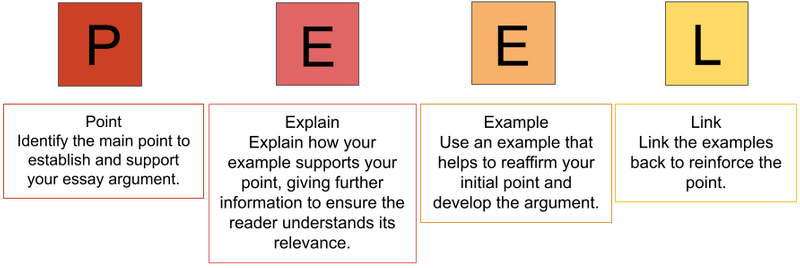
This logo isn't an ad or affiliate link. It's an organization that shares in our mission, and empowered the authors to share their insights in Byte form.
Rumie vets Bytes for compliance with our
Standards.
The organization is responsible for the completeness and reliability of the content.
Learn more
about how Rumie works with partners.
You're preparing to take the IELTS exam, but you're not sure how to plan for writing task part 2.
Understanding how you should answer and lay out your essay is important for you to get a good mark (or band score as they're called in the IELTS) on IELTS Writing Task 2 questions.
What do you need to do?
Task 2 is an essay task and the amount of time you should spend is about 40 minutes. You should write at least 250 words, although you can go a little over this amount. The style should be formal as if you're writing an academic essay.
 Photo by Unseen Studio on Unsplash
Photo by Unseen Studio on UnsplashTask response: How relevant and well supported your ideas are
Coherence and cohesion: Is your writing clear and easy to understand?
Vocabulary: Variety of words used
Grammar: Different grammar used and its accuracy
Know the different types of questions
It is a good idea to understand the different types of questions that can be asked. The questions cover universal topics such as family, health, education, and work.

Here are some examples of common IELTS Writing Task 2 question types:
Discussion: Some people think...Discuss both views and give your opinion.
Opinion: To what extent do you agree or disagree about...?
Problem and solution: What measures could be taken to prevent?
Two-part question: Some people believe that...Discuss both views and give your opinion.
Essay structure and timings

Essay structure
You should break the essay down into four or five paragraphs:
Introduction
Two or three main paragraphs
Conclusion
In total, you should write roughly fourteen sentences. The introduction uses two sentences. Then two or three main paragraphs of five sentences each (90-100 words per paragraph) to support your ideas. The conclusion can be one or two sentences to finish.

Timings for planning and writing
Planning = 10 minutes
Writing the introduction = 5 Minutes
Writing the main paragraphs = 20 minutes
Writing the conclusion = 5 minutes
Structuring your paragraphs with the PEEL method
The PEEL method is a four-point approach used to write essays. It helps with clarity, coherence,and effectiveness in presenting arguments or ideas.
 Image created by the author via Google Slides. To hear an audio description of the text in the image, press play on the audio player below:
Image created by the author via Google Slides. To hear an audio description of the text in the image, press play on the audio player below:
For example:
The Importance of Exercise for Overall Health
(P) Physical exercise is central to maintaining good health and well-being. (E) Firstly, exercise helps to improve cardiovascular health by strengthening the heart. It also plays an important role in controlling a person's weight, as it helps to burn calories. (E) For example, a 30-minute walk every day can greatly improve overall health, providing both mental and physical benefits. (L) In conclusion, the importance of having regular exercise is fundamental, as it is essential for maintaining great health and vitality.
Why is planning your essay important?
Planning your essay is an excellent strategy for answering the question, as it helps you organize your ideas.

What to think about when planning to answer IELTS Writing Task 2 questions:
What is the main point of the question?
Brainstorm some main ideas to answer the question.
Brainstorm supporting points to the main ideas.
Place your ideas into paragraphs.
Like any skill, planning takes practice, so you should try to practice as many past paper questions as you can.
With 10 minutes of planning time, take 4 minutes to plan the whole essay and 3 minutes to plan the main paragraphs.
Did you know?
You can use the question sheet to make notes instead of the answer sheet since the examiner will not see or mark it.
Use a variety of words
Using a mixture of different vocabulary is very important to get a higher mark. Show off how good your English is. Like an Olympic skater, skate to impress the judges.

Adding information: Furthermore, In addition, Similarly, Furthermore
Contrasting ideas: Nevertheless, Nonetheless, In contrast, Whereas
Giving examples: For instance, Such as, Namely
Emphasizing: Undoubtedly, In fact, Particularly
Summarizing: In summary, Overall, To conclude
Sequencing: Firstly, Secondly, Thirdly, Finally
Providing cause and effect: Consequently, Therefore, As a result
Clarifying: In other words, To clarify, Put another way
Comparing: Similarly, Likewise, In comparison
Adverbials: so that, although, even though, as though
Idioms: the bottom line, best of both worlds, cutting corners
Quiz
Which words would be good to fill the blanks? "______, many argue that rural areas provide safer environments for children to grow up in. ______, the slower pace of life can have benefits, ______ better emotional well-being and health."
Here is what the sentence should look like: "For instance, many argue that rural areas provide safer environments for children to grow up in. Furthermore, the slower pace of life can have benefits, such as better emotional well-being and health."
Take Action

This Byte has been authored by
Stuart Brown
English Teacher
PGCE